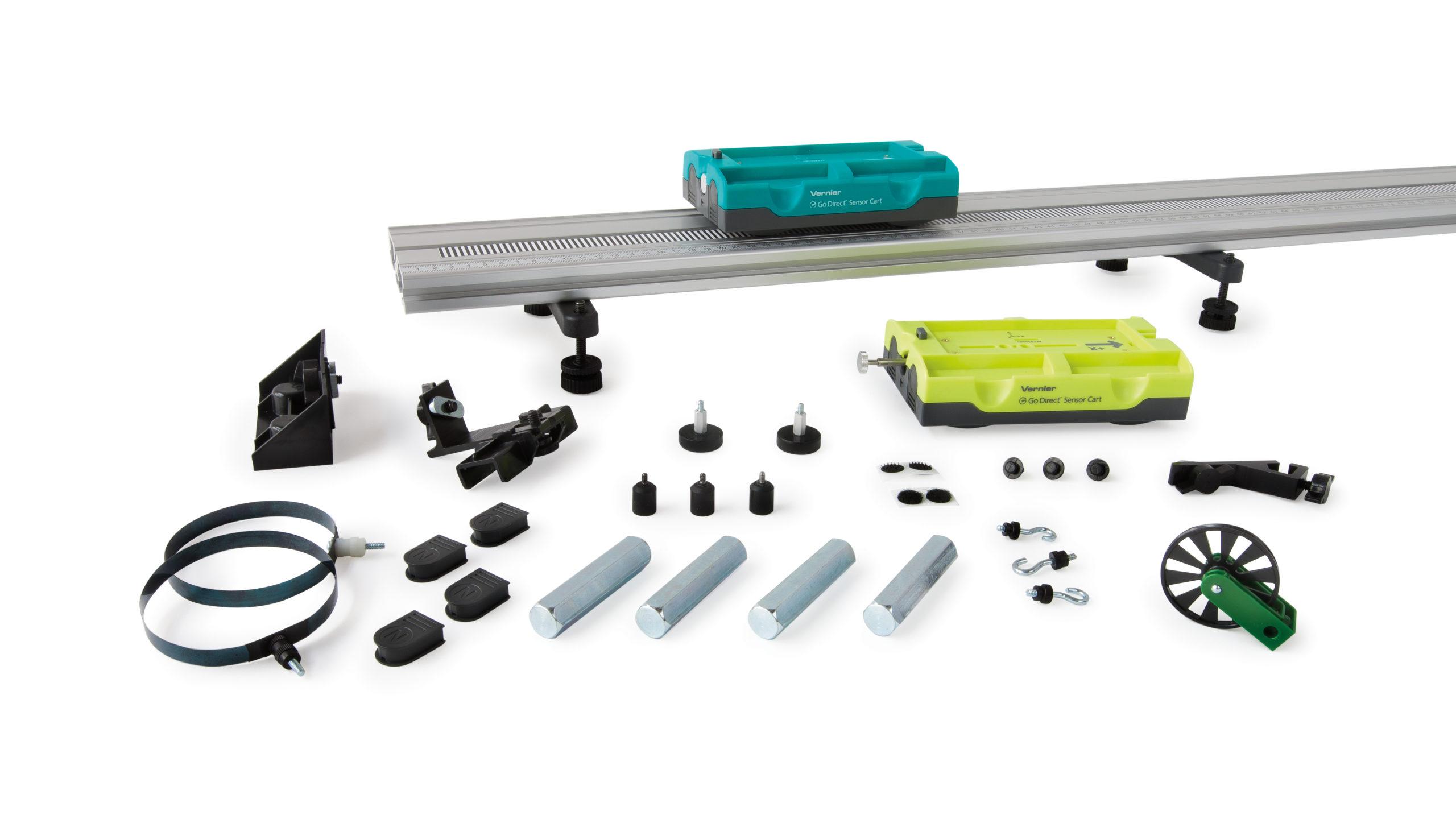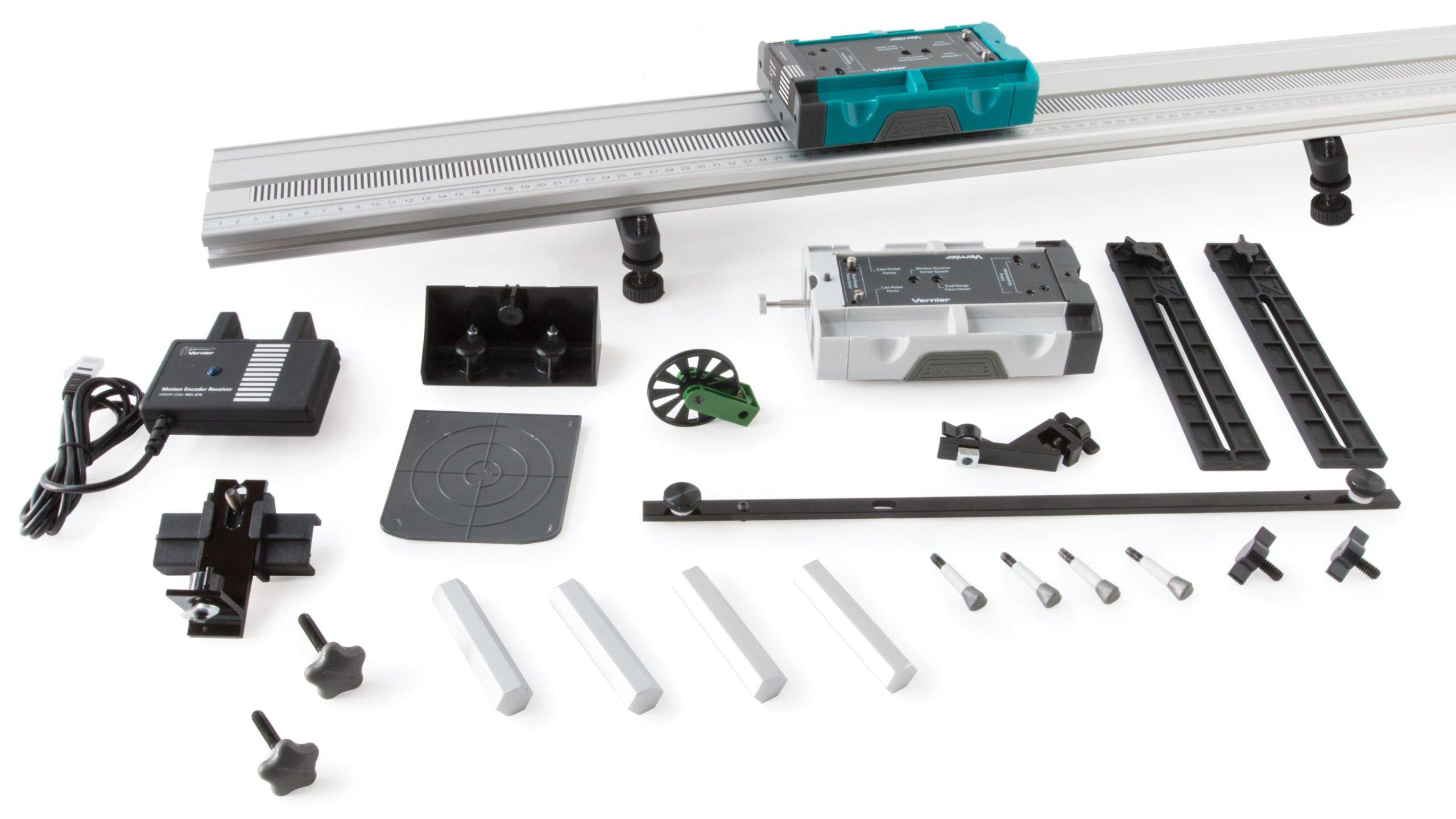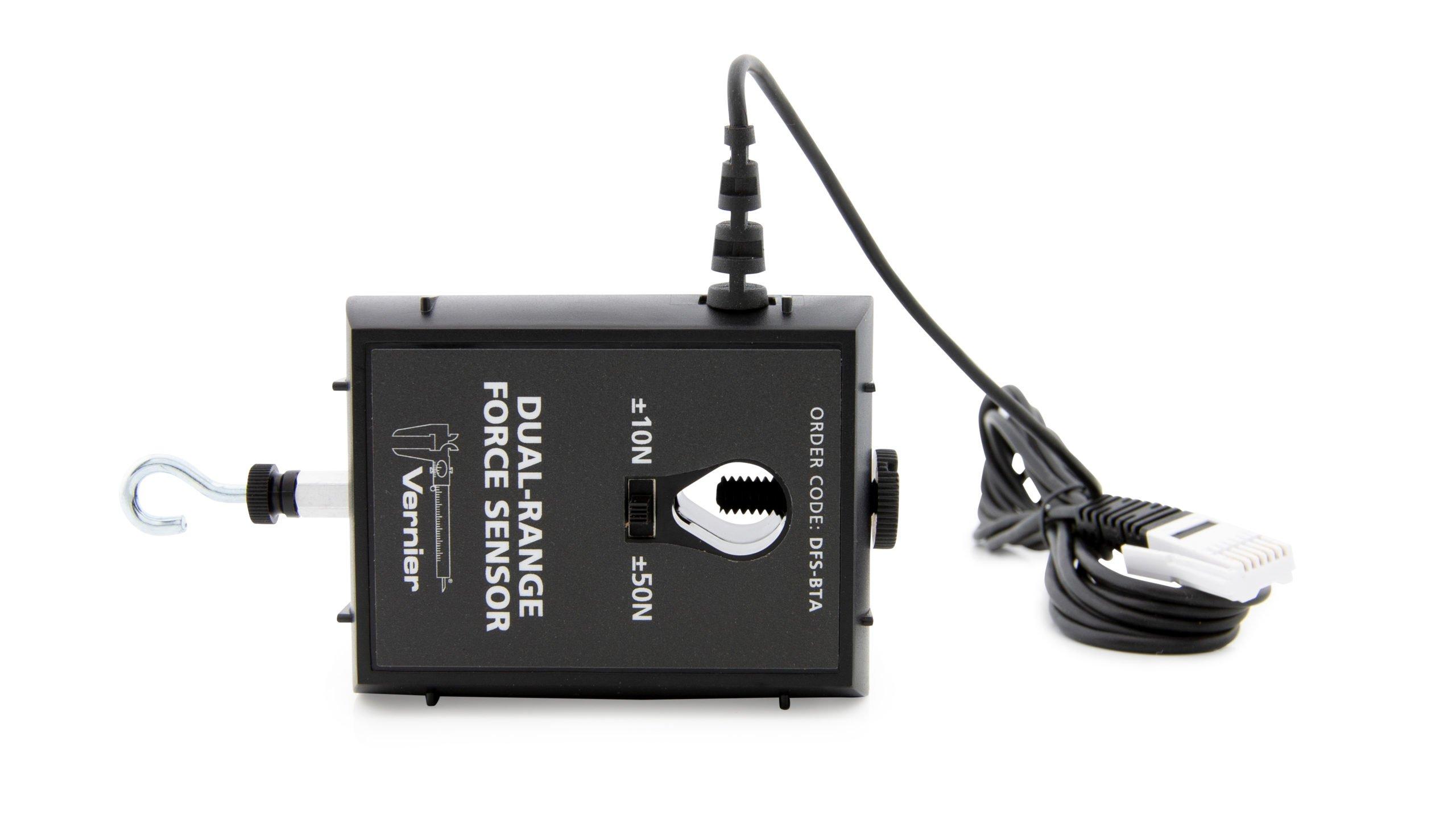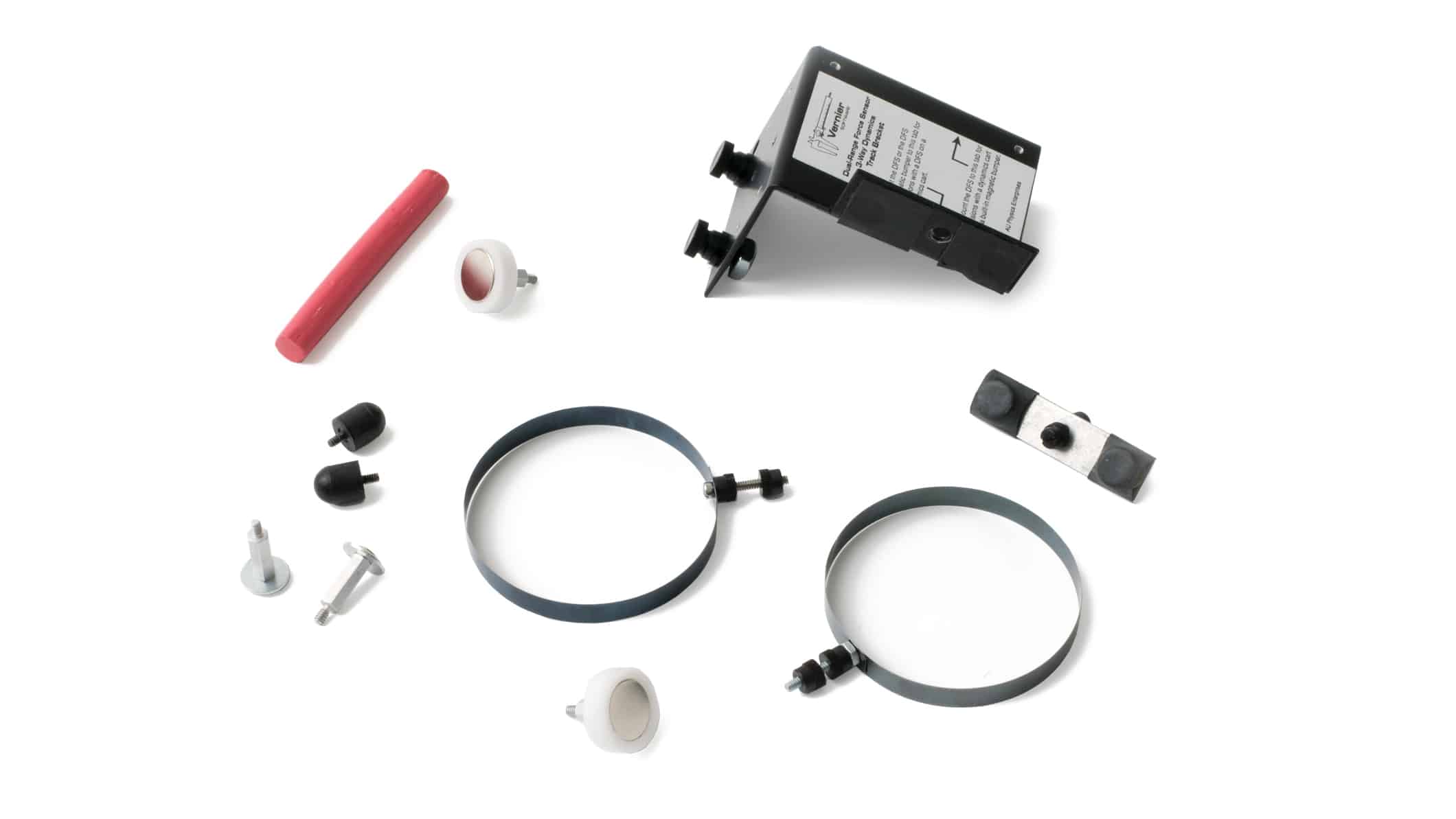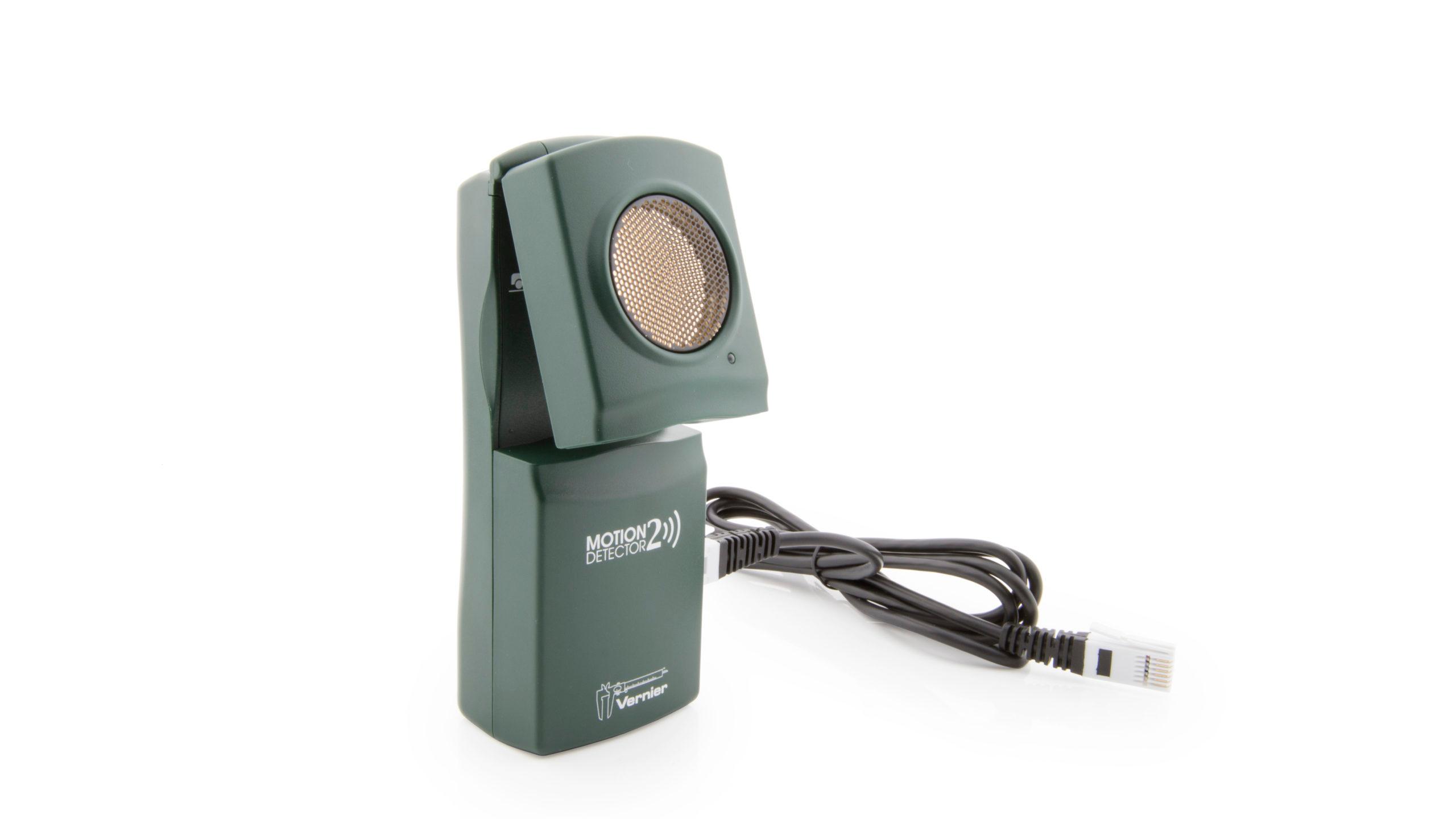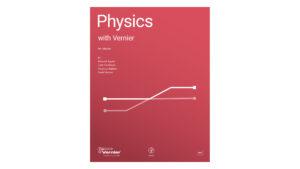
Introduction
The impulse-momentum theorem relates impulse, the average force applied to an object times the length of time the force is applied, and the change in momentum of the object:
Here, we will only consider motion and forces along a single line. The average force, , is the net force on the object, but in the case where one force dominates all others, it is sufficient to use only the large force in calculations and analysis.
For this experiment, a Motion Encoder Cart will roll along a level track. Its momentum will change as it collides with a hoop spring. The hoop will compress and apply an increasing force until the cart stops. The cart then changes direction and the hoop expands back to its original shape. The force applied by the spring is measured by a Dual-Range Force Sensor. The cart velocity throughout the motion is measured with a Motion Encoder. You will then use data-collection software to find the impulse to test the impulse-momentum theorem.
Objectives
- Measure a cart’s momentum change and compare it to the impulse it receives.
- Compare average and peak forces in impulses.
Sensors and Equipment
This experiment features the following sensors and equipment. Additional equipment may be required.
Correlations
Teaching to an educational standard? This experiment supports the standards below.
- International Baccalaureate (IB) 2025/Physics
- The students should understand that linear momentum as given by p = mv remains constant unless the system is acted upon by a resultant external force
- The students should understand that a resultant external force applied to a system constitutes an impulse J as given by J = FΔt where F is the average resultant force and Δt is the time of contact
Ready to Experiment?
Ask an Expert
Get answers to your questions about how to teach this experiment with our support team.
- Call toll-free: 888-837-6437
- Chat with Us
- Email support@vernier.com
Purchase the Lab Book
This experiment is #19 of Physics with Vernier. The experiment in the book includes student instructions as well as instructor information for set up, helpful hints, and sample graphs and data.

